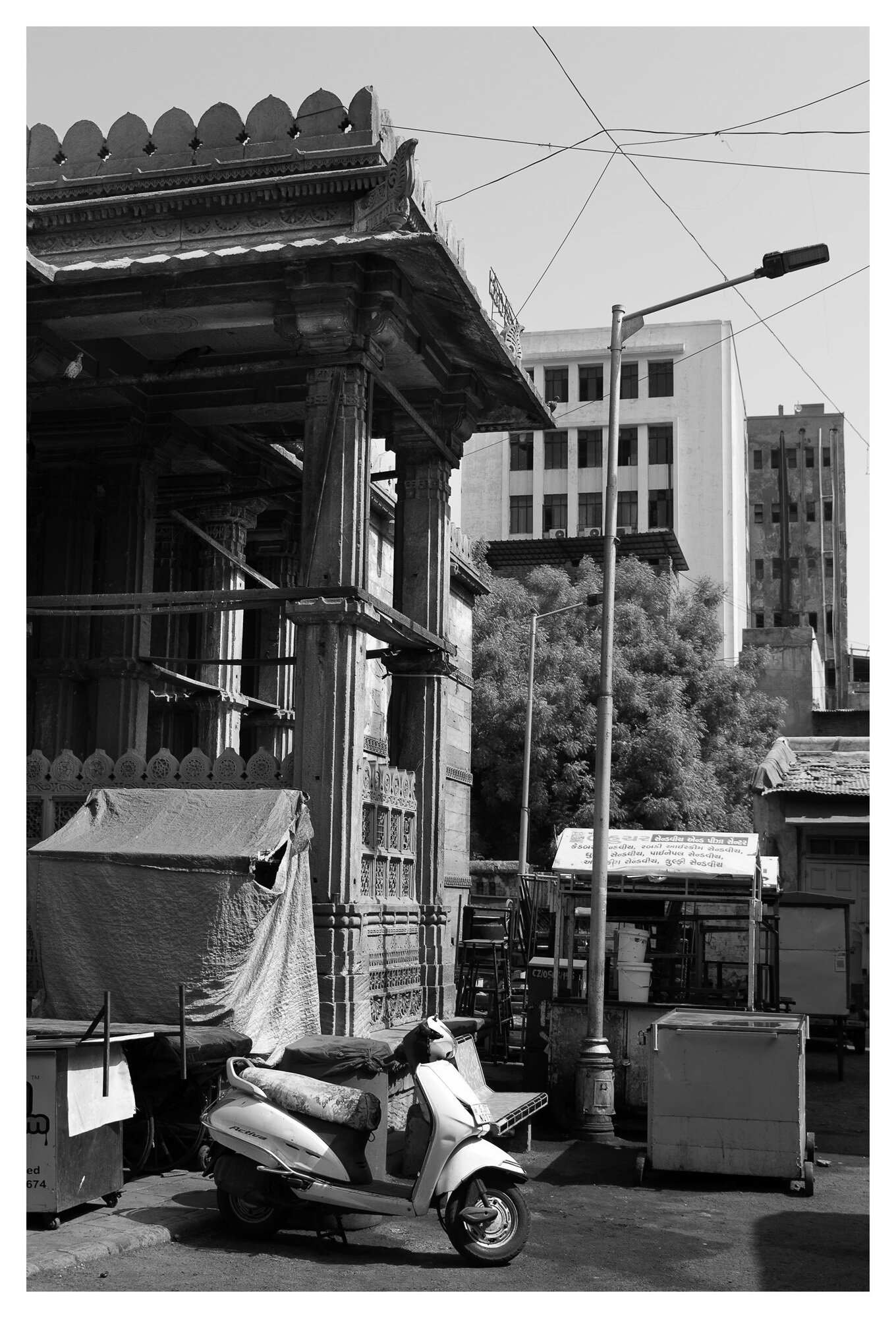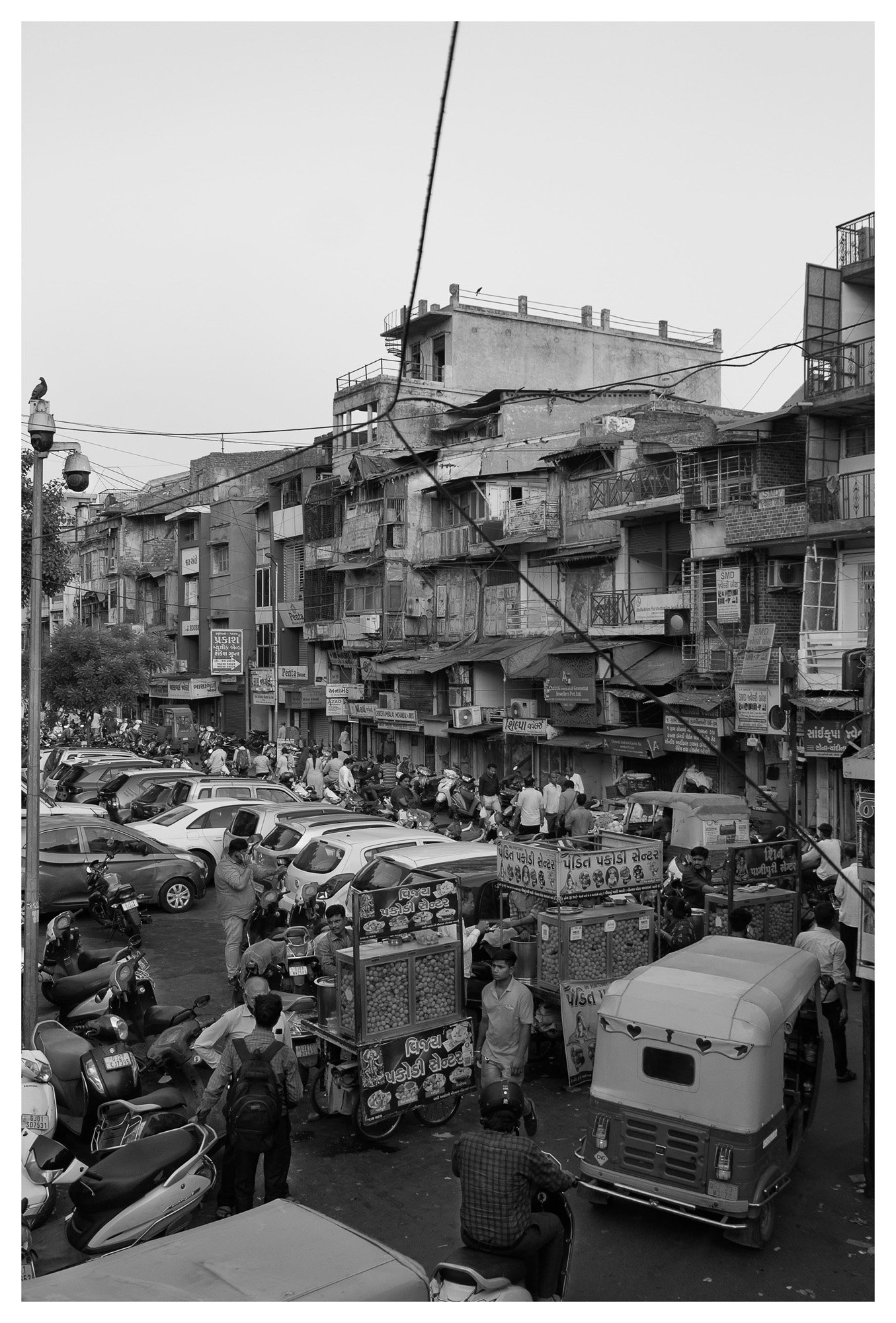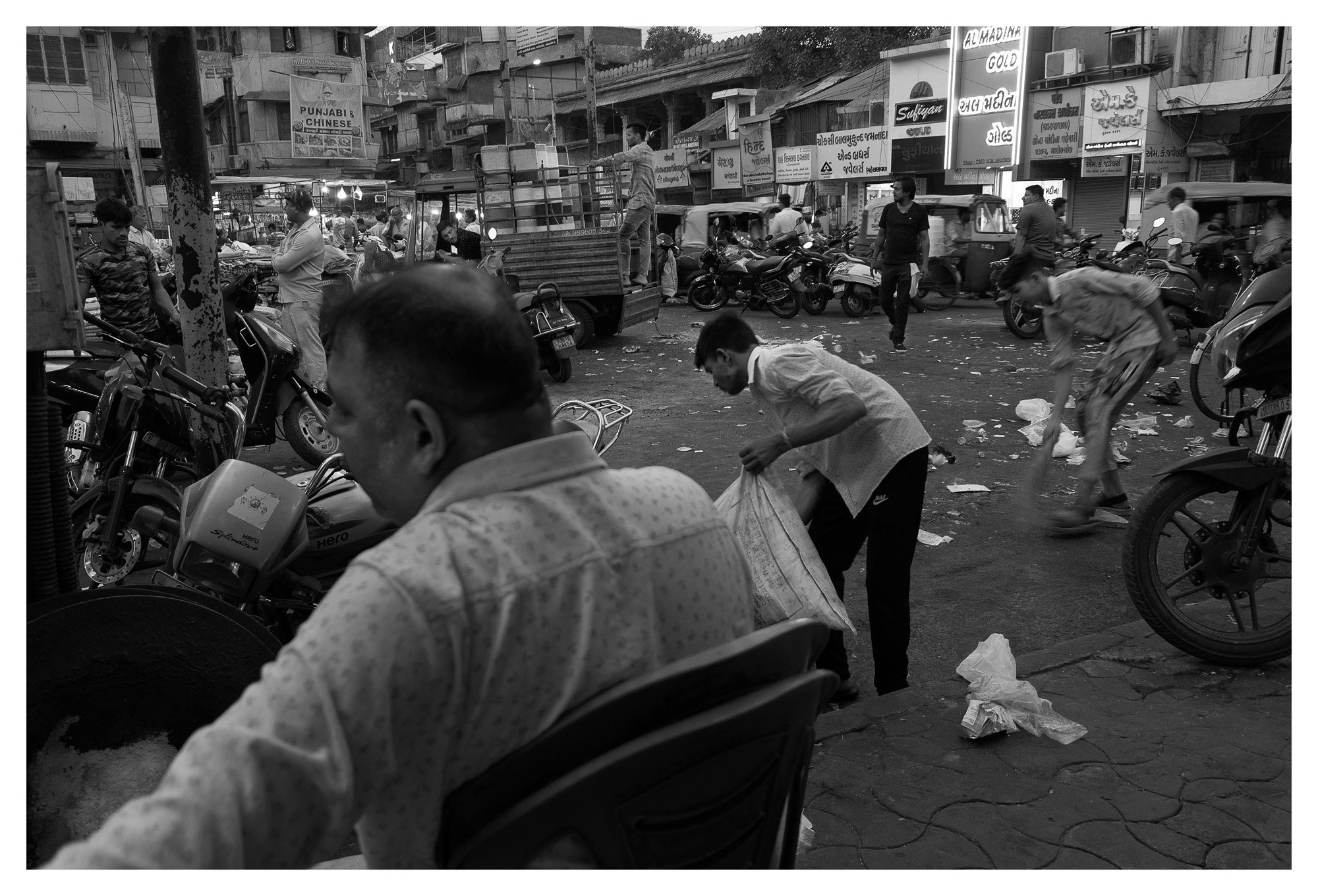Space as a Catalyst
Kashish Kochhar
Manek Chowk is an example of a traditional public space that constantly adapts to changes for its effective usage as an urban public place. It is an important heritage site adjacent to the Jama Masjid and King’s and Queen’s tombs. From a vegetable/idle space in the morning to bullion and multiple other formal shop activities in the noon, Manek Chowk slowly starts transitioning into a street food setup by evening. Around 2 am, the space returns to the phase of refreshment but leaves behind its traces for the next round of transition.
The body of work constructs and deconstructs space to understand the notion of community through photographic documentation and an etched multi-slide projection box.
Space as a Catalyst studies how a public space like Manek Chowk in Ahmedabad, Gujarat, India, forms and deforms over time, as does the community within.
Biography
Kashish Kochhar
Kashish Kochhar (b. 1998) is an Architect and Visual Artist. Graduating with a Bachelor's in Architecture from the School of Planning and Architecture, Bhopal (an Institute of National Importance), and is currently pursuing her Masters in Design in Photography Design, from the National Institute of Design, Gandhinagar (an Institute of National Importance).
Kashish has briefly practised Architecture under the guidance of Architect Sameep Padora. She recently completed a short summer internship at Mrinalini Mukherjee Foundation and is currently a fellow co-curator for Future flow (which is a part of the British Councils India/UK together season marking India’s 75th anniversary of independence).
Kochhar is intrigued by how the culture responds to all the cycles/layers of spatial performance at different scales and yet somehow manages to neglect the same. She is interested in deriving processes of urban and architectural inquiries to contextualise the direction of building buildings or urban parcels.






















